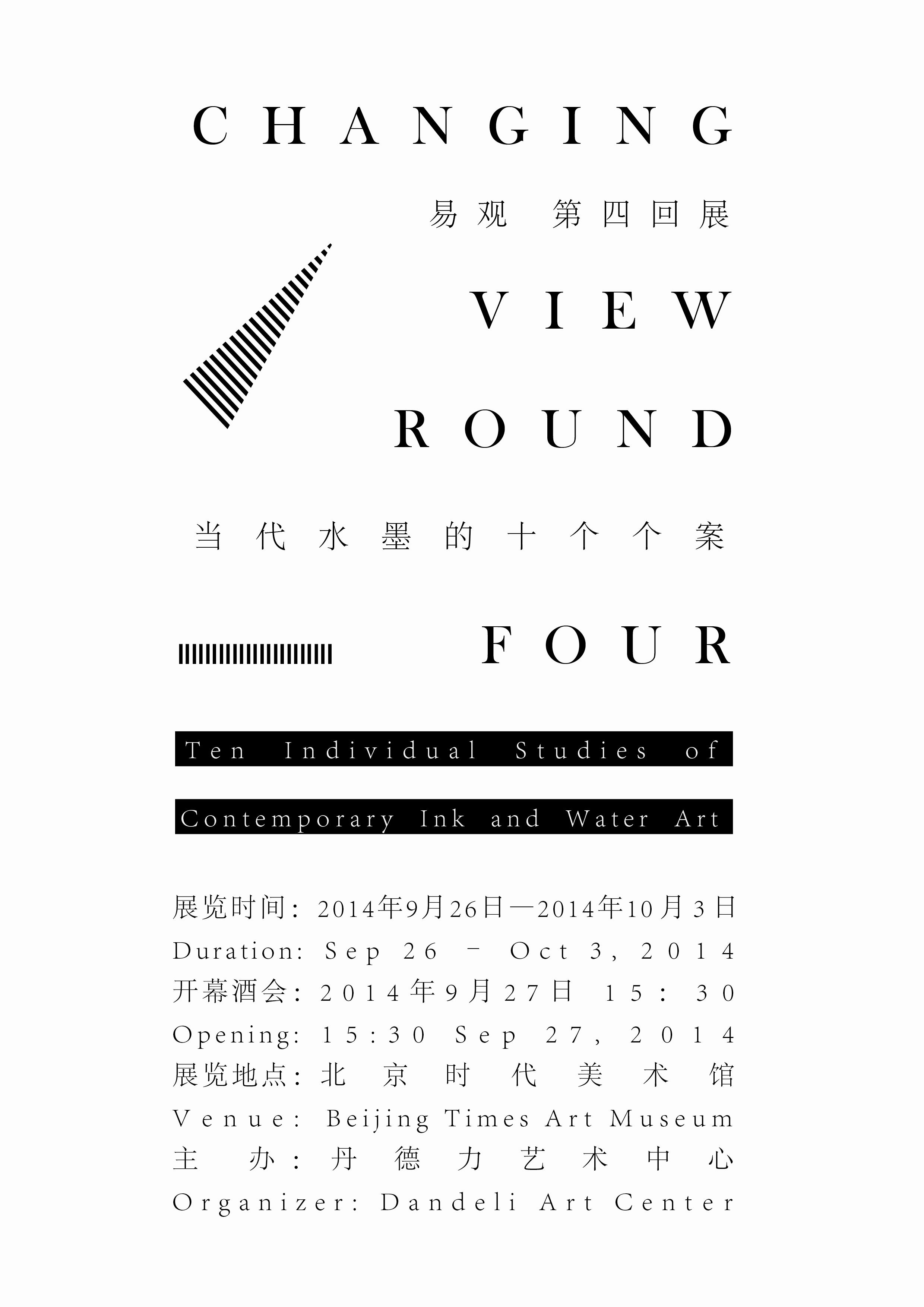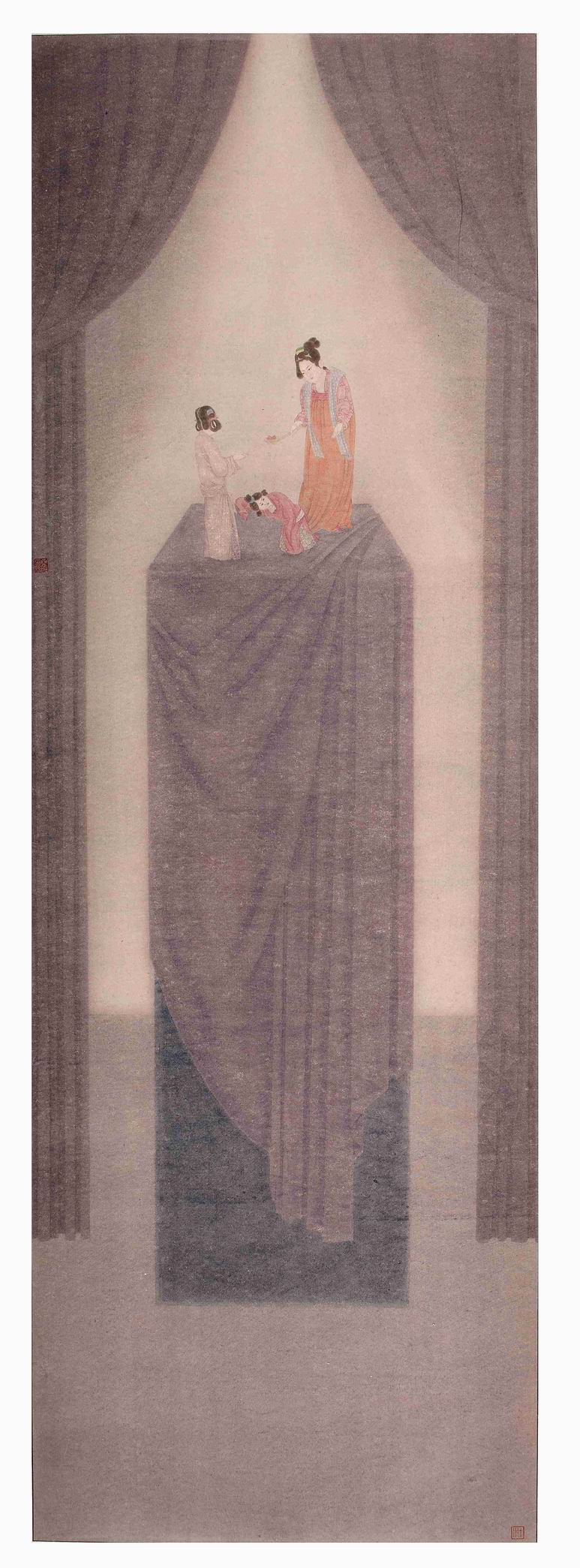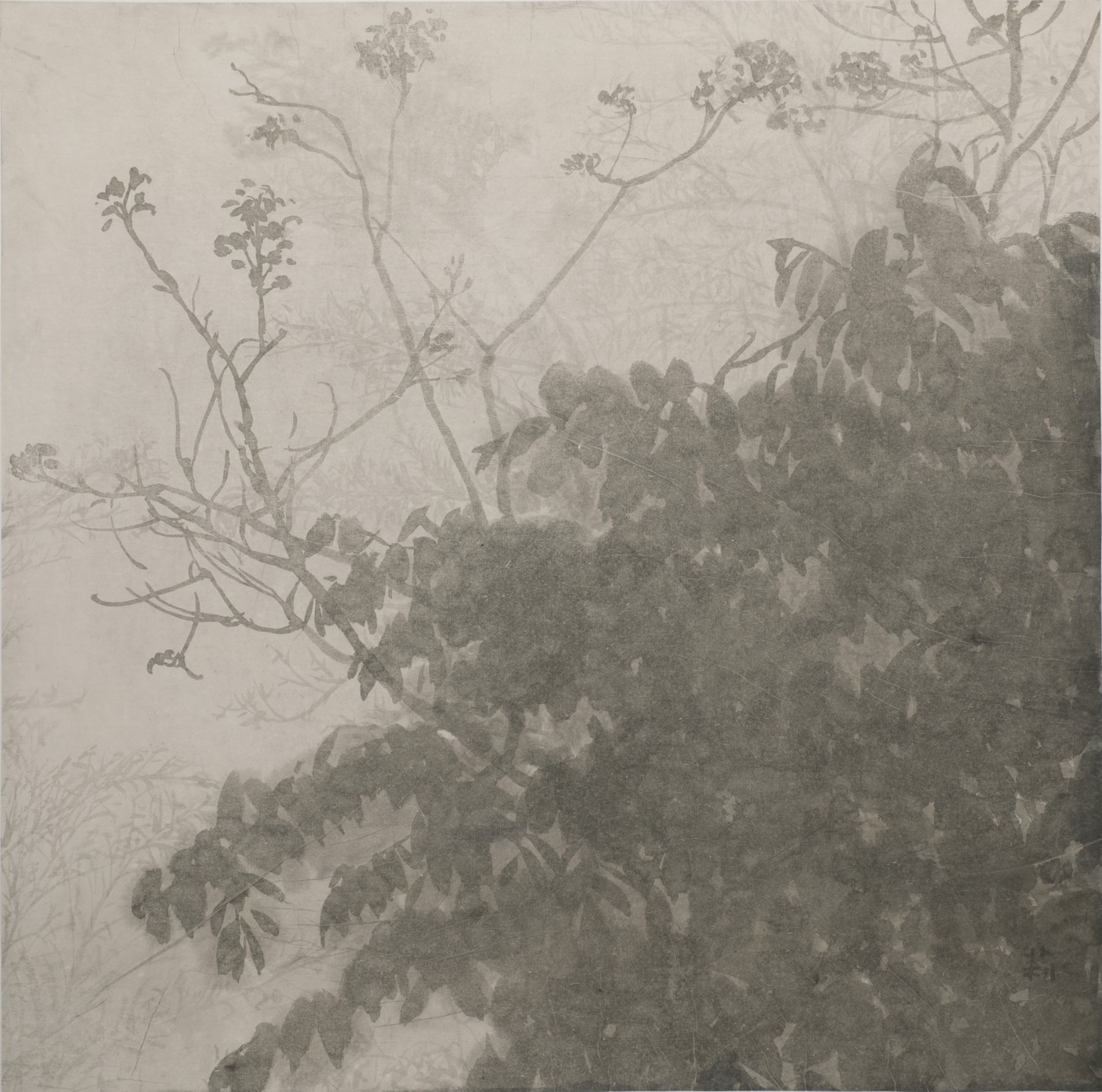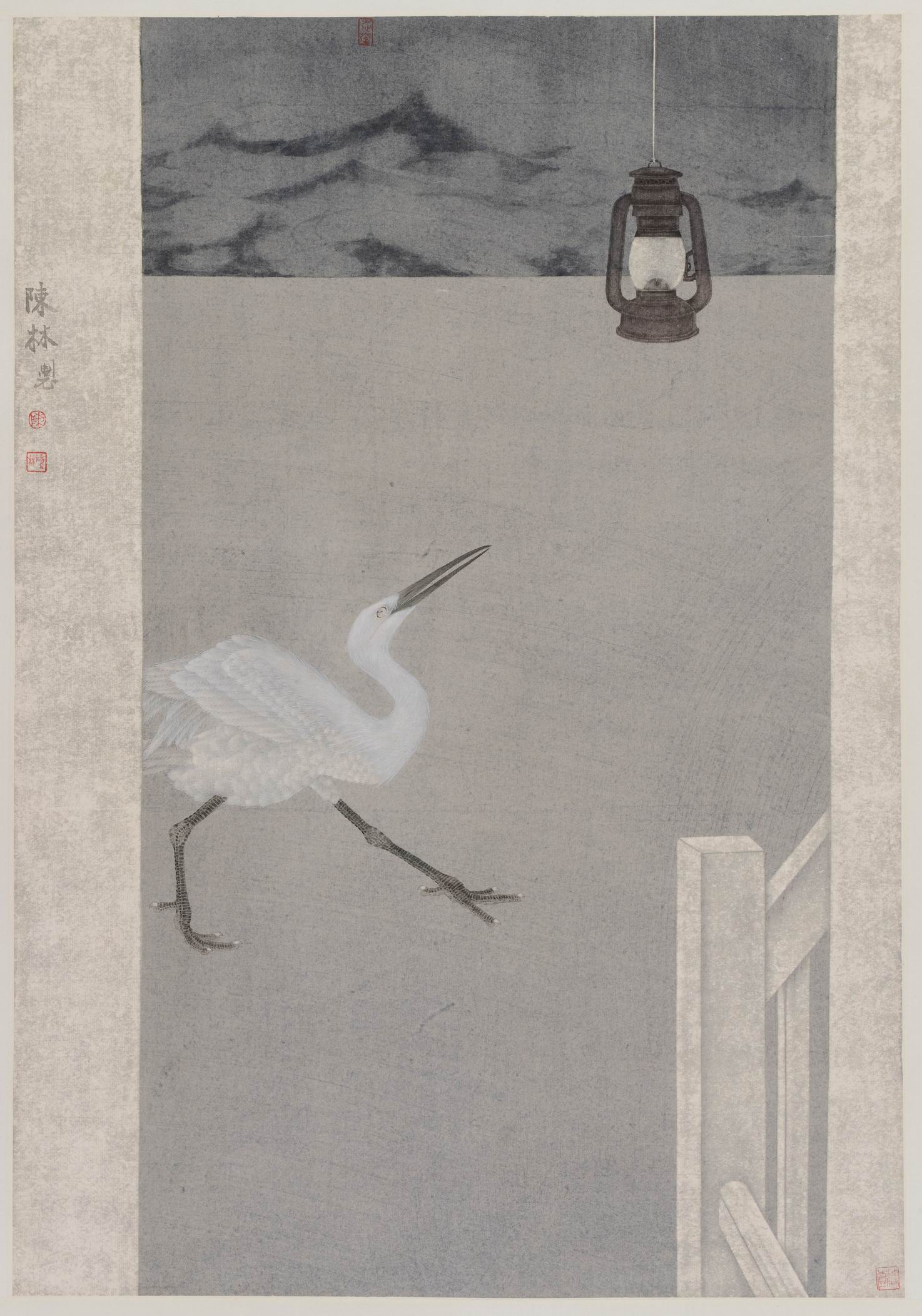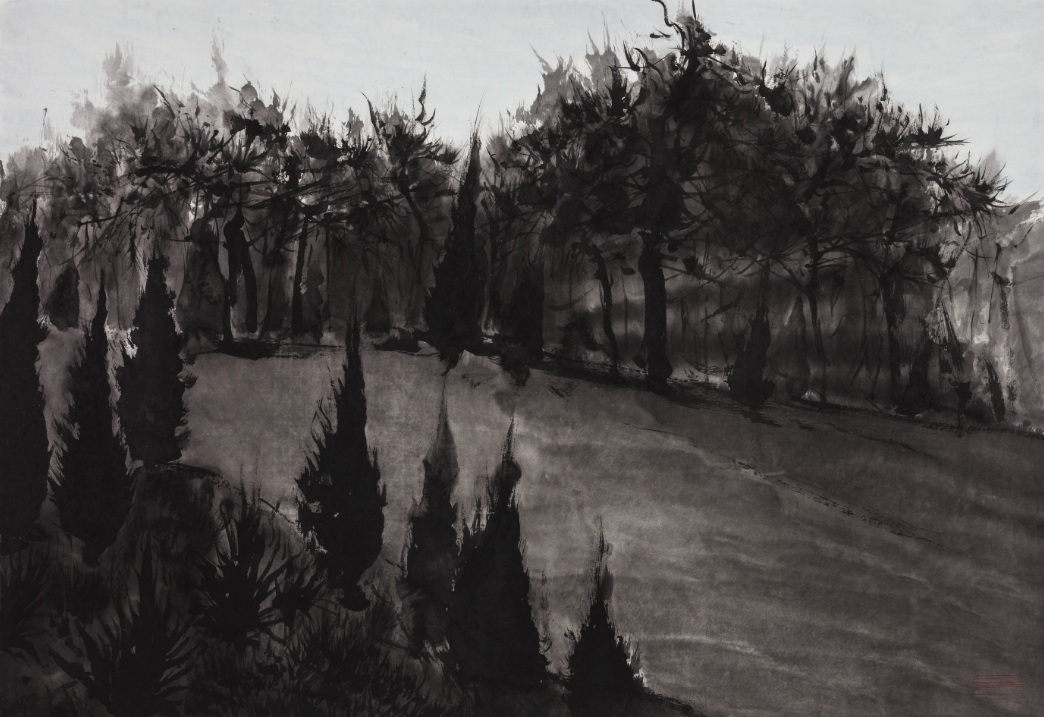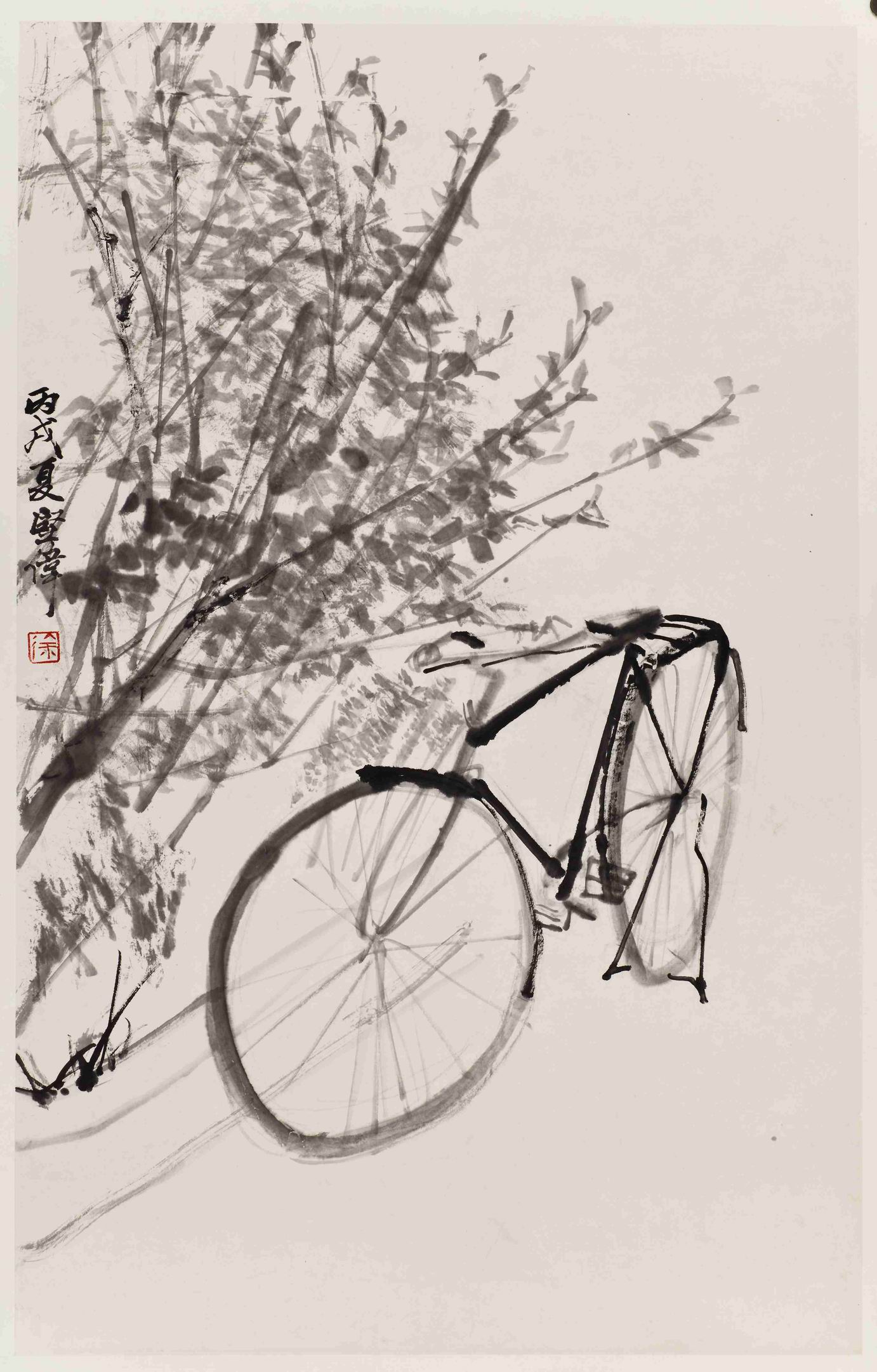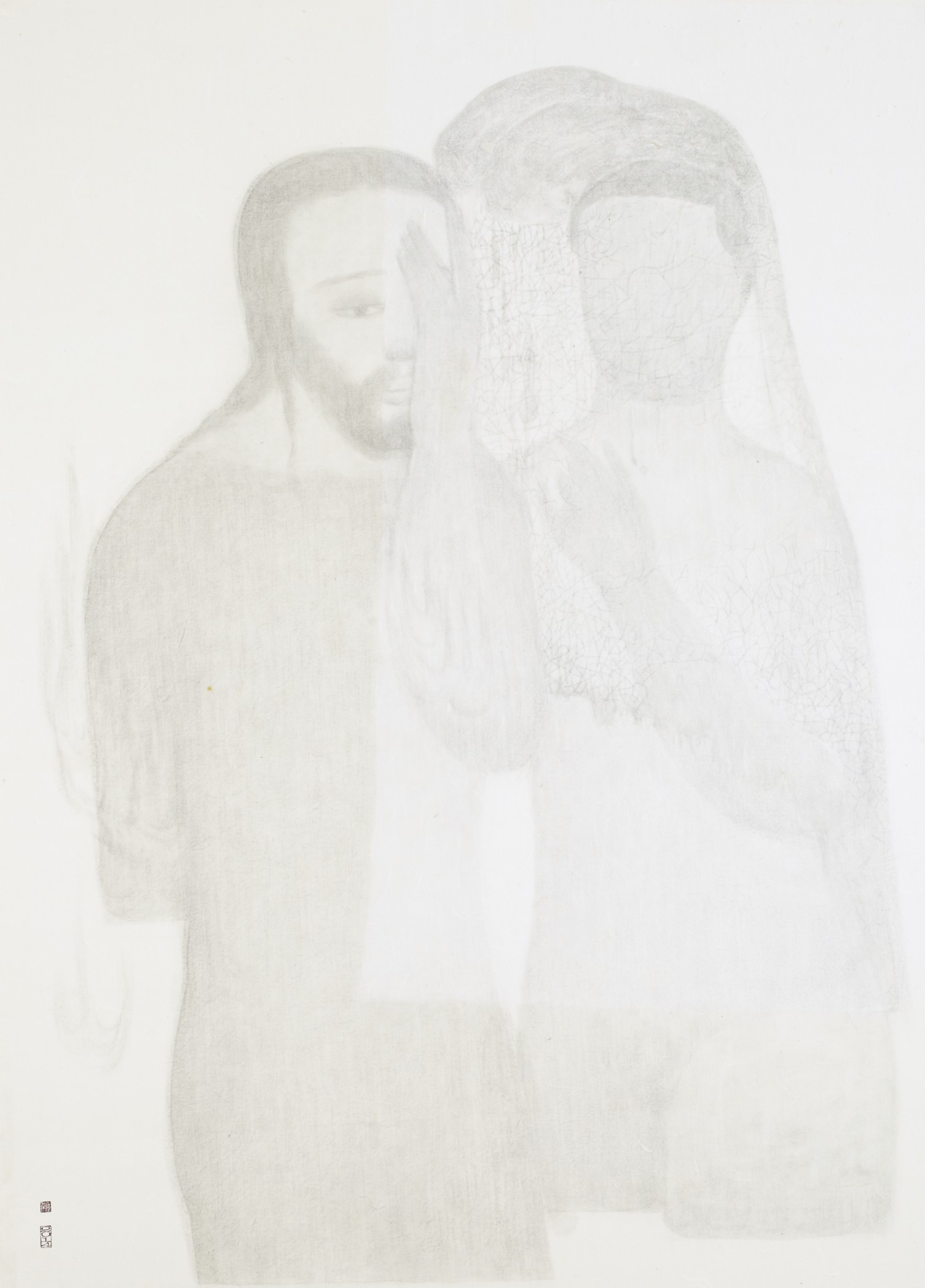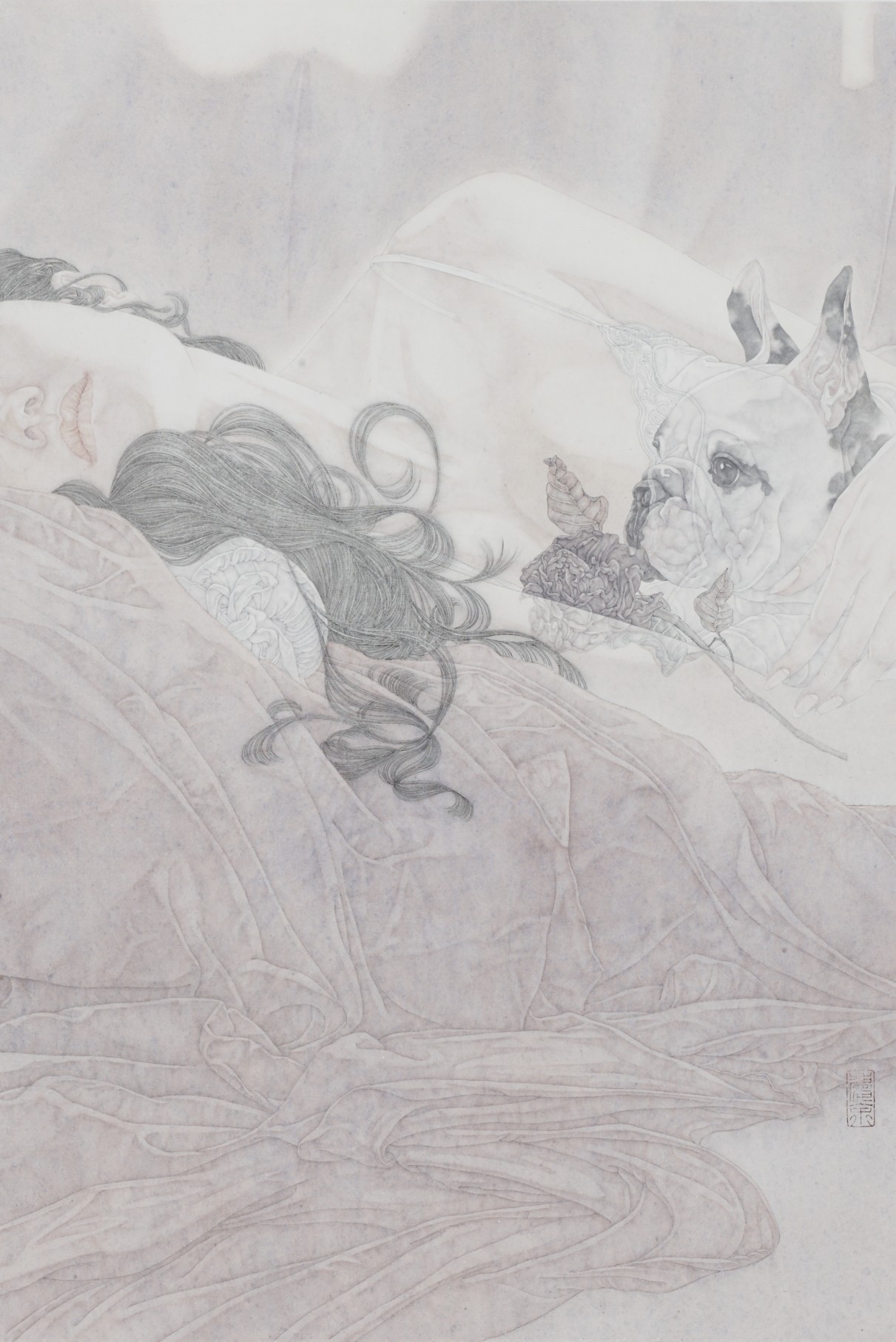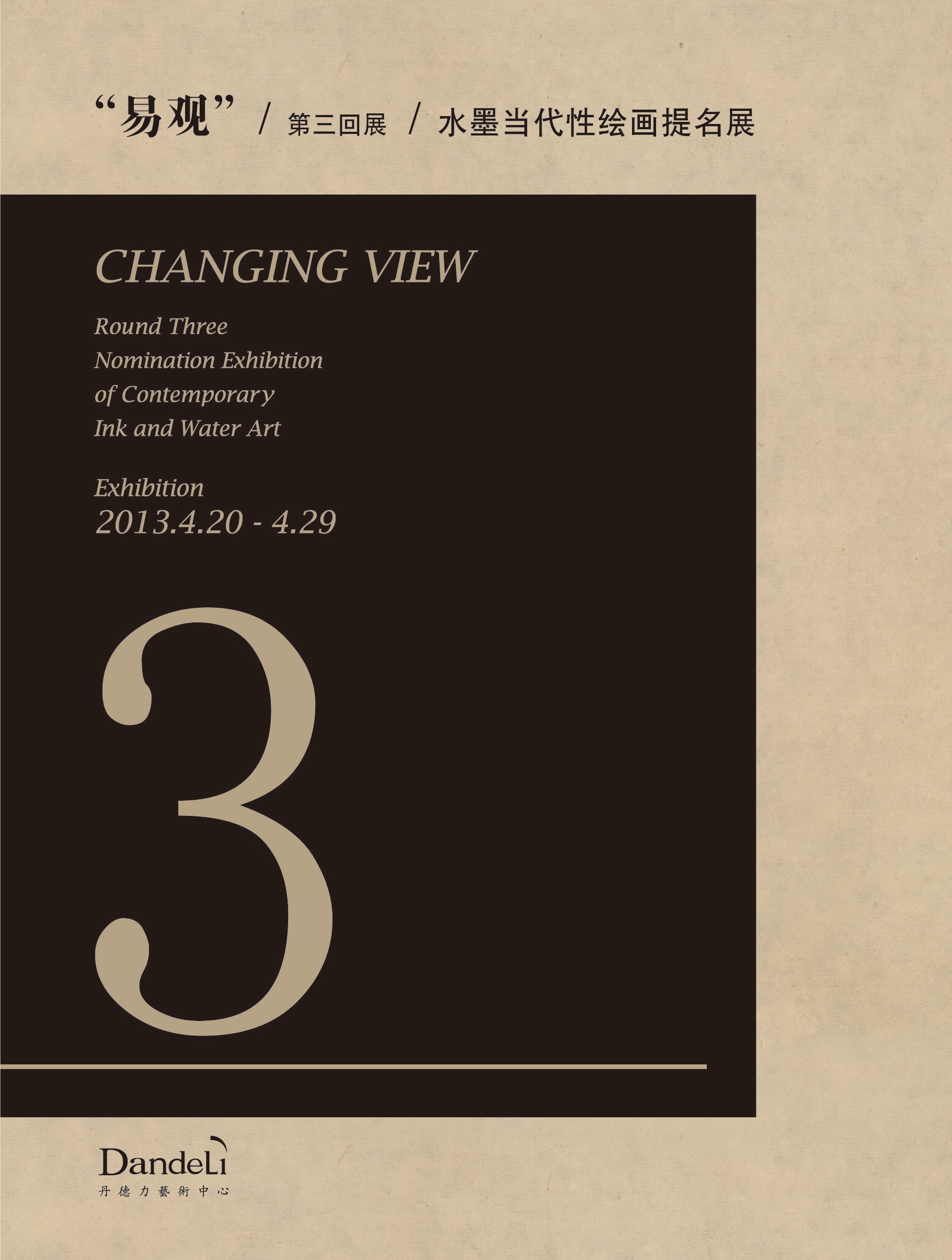Ink and water art or ink-wash painting as a concept that is conceived via connotations of Chinese paintingis a resultof the combination of the obsession for this type ofart and the contemporary cultural context. In recent years, it has become a well-known phenomenon that the ink-wash paintinghas progressed remarkably, anddifferent types of ink-wash art exhibitions emerge in various streams in China. Terms such as"Neo-ink-wash" and "Neo-brushwork" ("New Gongbi") have often been mentioned in the academic word as well as inmedia.Itis hence to say that introducing Chinese ink-wash art to the world demonstrates the confidence and awareness of the Chinese in our own culture. Dandeli Art Center strives to serve as a platform to promote and develop the influence of contemporary ink-wash artthrough a series of exhibitions titled"Changing View" exhibition series. We have showcased“Round One-Nomination Exhibition of Chinese Contemporary Gongbi Art”, “Round Two-Nomination Exhibition of Contemporary Ink and Water Art” and “Round Three-Nomination Exhibition of Contemporary Ink and Water Art” in 2010, 2012 and 2013 respectively. In 2014, we continue to further unearth the significance and progress of the ink-wash painting with different perspectives from ten independent artists and to search for the multifaceted possibilities of the contemporary progress of ink-wash arts.
Among the vocabulary of the Chinese visual art, ink-wash painting, as a traditional medium with more than ten centuries of development, has extremely rich aesthetic connotation and illustrates the position of Chinese culture and art. However, this form of art has often been discussed in two extremes within the Chinese context: on the one hand, ink-wash painting is viewed asa spirit and emotional complex, where the spirit is more discussed than its creation and the methodology; one the other hand, ink-wash paintinghas become a view of national culture that is complicated by the cultural identity of Chinasince the post-colonialism era. Between the two, ink-wash painting will continue to progress and there is a need to establisha new topic on "contemporariness"as an academicconcept, apart from the brushstroke, shape, material, rationality and poetical connotation of this art. Indeed, we need anideologyand attitude that is closely related toour life, where the variety of visual senses would expand the pastconventional ink-wash paintingformula, and where the tension of art language permeates the very details of the zeitgeist of this artwhich intends togalvanizethe new desire and awaken the old vigor. Even though the medium material has not varied much, the themes and norms of ink-washpainting which is a type of art that matures at a very early stage within the realm ofart keep on evolving. This fact illustrates the manifold possibilities and innovation essence of this art.
This exhibition is considerably open-ended: to the creators of the current order, "Neo-ink-wash" and "New Gongbi" are newcomers in their existing domain,but is such argument itself unbalanced or narrow-minded? We do not wish to confine ourselves within the popular concepts of "Neo-ink-wash" and "New Gongbi", but rather attempt to present them in front of the contemporary multiculturalisminstead of staying in the same circle within the Chinese painting along with the superficial appearance of ink-wash painting. It is possible to be more equalif, instead of defining the mediumone discovers the essence of the spirit of the art work, one could express this art in the sphere of contemporary or even artin global language without being afraid to go beyond the currentboundary.
After all, the scale of an exhibition is limited. Nonetheless, the artists that this exhibition has invited and art works displayedreflect the directions of discovery of those artists from different aspects. The invited artists have clear senses of, among others, artistic language, the modernist spirit and the visual effects in their respective artwork. Onone hand, they absorb the essence of the tradition with their broad-mindedness. On the other hand, their specialty has molded the focuses of expression from their own lives, and has tempered these expressions to form unique characteristics of their artistic language. The novelty and technicality contained in their paintingshave extended the expression of ink-wash painting and enriched the composition of the contemporary arts. As artists, they shouldexpress different views of this world in a parallel era and disclose the reality behind the visual presentation.
Lin Chen, through his imagination, has re-established the visual space to further the transition from ancient context tocontemporary context and to compose a fresh graphic norm. Yaxuan Du, a student of Lin Chen, has expressedher subjective sensation of the world with surreal concepts, which fabricates a dreamy wonderland. Geye Li and Beili Ding, female artists from Jiang Nan region, have touched upon the narration of water. Geye Li elaborates the uncertainty of lives of people who live in modern times in her paintings, which visually explores the inner homelessness and blindness. The water drawn by Beili Ding is pervaded with a slow and tranquil atmosphere of the mountains and rivers, with her mild strokes that delineate the scenery. Xiuping Qin, a member of Qishe, a group of artists which have become active in recent years, borrows from the tradition to shed a light on the present with a solid foundation of the artistic construction and efficacy, as well as the openness and humor in the delineation of landscapes and personal images. Expressing the ingenuity of the black-white tension, Jiacun Xu, another member of Qishe, has reached the balance of composition that illustrates the infinite beauty of the ink-wash and image-configuration.After ascertaining the accurate image-configuration, Qingyu Zheng has compressed the space and time into the paper, opening a door to decipher peace. Shaohui Tu, on the other hand, creates an atmosphere with a graphic norm that does not come from pure nature, which leaves a room to the imagination. Jianwei Xu who persists in sketching expresses his inner self that focuses on the gnosis of the reality and life; nonetheless, he does not deliberately confine himself within the traditional sketch skills, but rather breaks through the convention and reveals the essence through the details. The works of Hairong Yan stress on the painting itself and focus on the individual composition, which resorts to the individual mystery and the privacyon the paper, and diverting away from the objective description of the real world.
The ten artists jointly established this exhibition, with their unique understanding of art and daily life, have not only created an unusual visual experience for us, but also reflected their unique understanding of the essence of painting texture. More importantly, itisthe attitude of self-reflection, reflection of daily life, andan effort to seeking difference. Each of these individual creations of arts sheds a light on the principal cross-section of the contemporary ink-wash painting, which reveals the present situationand exhibits the "phenomenon" on an open platform. This exhibition does not intend to advocate any specific school of thought or value of the ink-washpainting, but rather focuses on the presence and phenomenon of this art.
Among the vocabulary of the Chinese visual art, ink-wash painting, as a traditional medium with more than ten centuries of development, has extremely rich aesthetic connotation and illustrates the position of Chinese culture and art. However, this form of art has often been discussed in two extremes within the Chinese context: on the one hand, ink-wash painting is viewed asa spirit and emotional complex, where the spirit is more discussed than its creation and the methodology; one the other hand, ink-wash paintinghas become a view of national culture that is complicated by the cultural identity of Chinasince the post-colonialism era. Between the two, ink-wash painting will continue to progress and there is a need to establisha new topic on "contemporariness"as an academicconcept, apart from the brushstroke, shape, material, rationality and poetical connotation of this art. Indeed, we need anideologyand attitude that is closely related toour life, where the variety of visual senses would expand the pastconventional ink-wash paintingformula, and where the tension of art language permeates the very details of the zeitgeist of this artwhich intends togalvanizethe new desire and awaken the old vigor. Even though the medium material has not varied much, the themes and norms of ink-washpainting which is a type of art that matures at a very early stage within the realm ofart keep on evolving. This fact illustrates the manifold possibilities and innovation essence of this art.
This exhibition is considerably open-ended: to the creators of the current order, "Neo-ink-wash" and "New Gongbi" are newcomers in their existing domain,but is such argument itself unbalanced or narrow-minded? We do not wish to confine ourselves within the popular concepts of "Neo-ink-wash" and "New Gongbi", but rather attempt to present them in front of the contemporary multiculturalisminstead of staying in the same circle within the Chinese painting along with the superficial appearance of ink-wash painting. It is possible to be more equalif, instead of defining the mediumone discovers the essence of the spirit of the art work, one could express this art in the sphere of contemporary or even artin global language without being afraid to go beyond the currentboundary.
After all, the scale of an exhibition is limited. Nonetheless, the artists that this exhibition has invited and art works displayedreflect the directions of discovery of those artists from different aspects. The invited artists have clear senses of, among others, artistic language, the modernist spirit and the visual effects in their respective artwork. Onone hand, they absorb the essence of the tradition with their broad-mindedness. On the other hand, their specialty has molded the focuses of expression from their own lives, and has tempered these expressions to form unique characteristics of their artistic language. The novelty and technicality contained in their paintingshave extended the expression of ink-wash painting and enriched the composition of the contemporary arts. As artists, they shouldexpress different views of this world in a parallel era and disclose the reality behind the visual presentation.
Lin Chen, through his imagination, has re-established the visual space to further the transition from ancient context tocontemporary context and to compose a fresh graphic norm. Yaxuan Du, a student of Lin Chen, has expressedher subjective sensation of the world with surreal concepts, which fabricates a dreamy wonderland. Geye Li and Beili Ding, female artists from Jiang Nan region, have touched upon the narration of water. Geye Li elaborates the uncertainty of lives of people who live in modern times in her paintings, which visually explores the inner homelessness and blindness. The water drawn by Beili Ding is pervaded with a slow and tranquil atmosphere of the mountains and rivers, with her mild strokes that delineate the scenery. Xiuping Qin, a member of Qishe, a group of artists which have become active in recent years, borrows from the tradition to shed a light on the present with a solid foundation of the artistic construction and efficacy, as well as the openness and humor in the delineation of landscapes and personal images. Expressing the ingenuity of the black-white tension, Jiacun Xu, another member of Qishe, has reached the balance of composition that illustrates the infinite beauty of the ink-wash and image-configuration.After ascertaining the accurate image-configuration, Qingyu Zheng has compressed the space and time into the paper, opening a door to decipher peace. Shaohui Tu, on the other hand, creates an atmosphere with a graphic norm that does not come from pure nature, which leaves a room to the imagination. Jianwei Xu who persists in sketching expresses his inner self that focuses on the gnosis of the reality and life; nonetheless, he does not deliberately confine himself within the traditional sketch skills, but rather breaks through the convention and reveals the essence through the details. The works of Hairong Yan stress on the painting itself and focus on the individual composition, which resorts to the individual mystery and the privacyon the paper, and diverting away from the objective description of the real world.
The ten artists jointly established this exhibition, with their unique understanding of art and daily life, have not only created an unusual visual experience for us, but also reflected their unique understanding of the essence of painting texture. More importantly, itisthe attitude of self-reflection, reflection of daily life, andan effort to seeking difference. Each of these individual creations of arts sheds a light on the principal cross-section of the contemporary ink-wash painting, which reveals the present situationand exhibits the "phenomenon" on an open platform. This exhibition does not intend to advocate any specific school of thought or value of the ink-washpainting, but rather focuses on the presence and phenomenon of this art.
James Han


